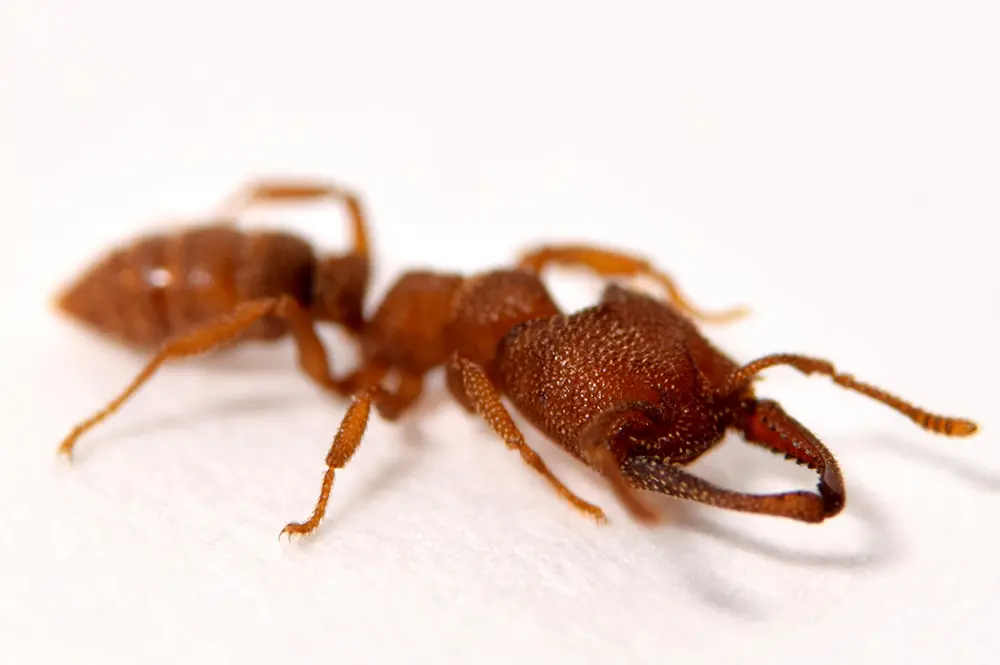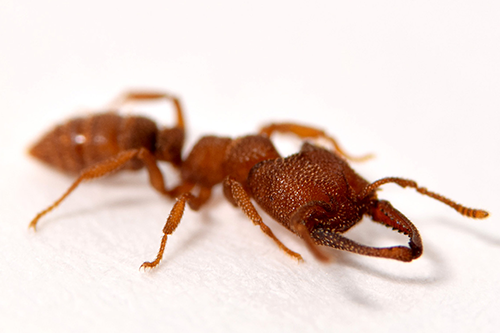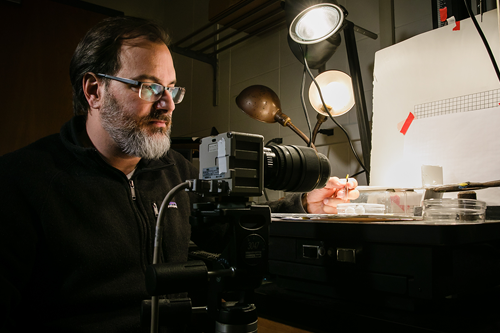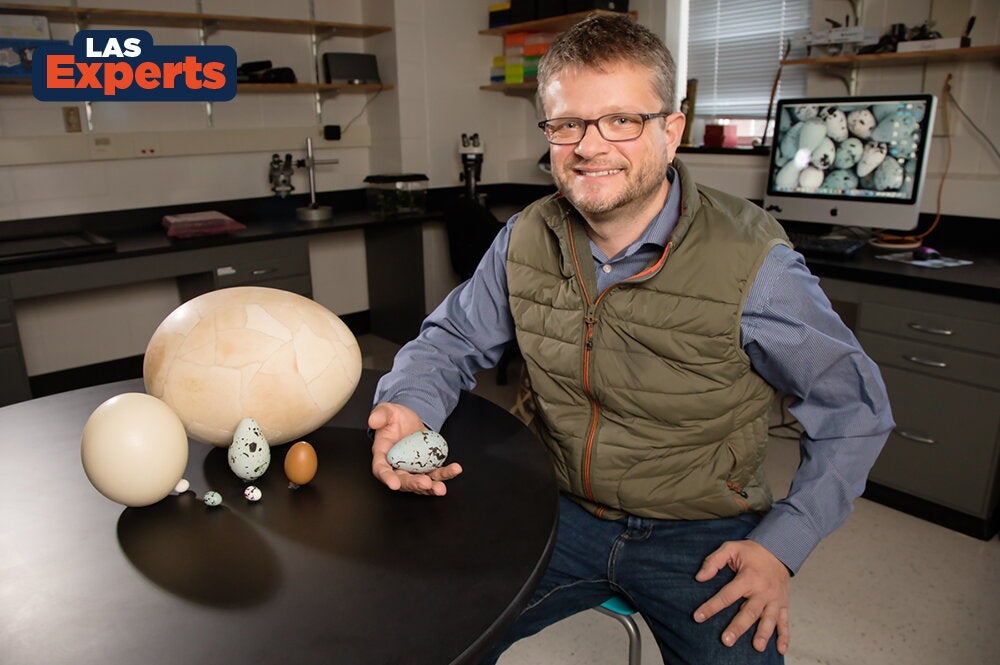

Move over, trap-jaw ants and mantis shrimp: There’s a faster appendage in town. According to a new study, the Dracula ant, Mystrium camillae, can snap its mandibles at speeds of up to 90 meters per second (more than 200 mph), making it the fastest animal movement on record.
“The high accelerations of Mystrium strikes likely result in high-impact forces necessary for predatory or defensive behaviors,” the researchers wrote in a report of their findings in the journal Royal Society Open Science.
“These ants are fascinating as their mandibles are very unusual,” said University of Illinois animal biology and entomology professor Andrew Suarez, who led the research with Fredrick J. Larabee, a postdoctoral researcher at the Smithsonian National Museum of Natural History; and Adrian A. Smith, of the North Carolina Museum of Natural Sciences and North Carolina State University, Raleigh. “Even among ants that power-amplify their jaws, the Dracula ants are unique: Instead of using three different parts for the spring, latch and lever arm, all three are combined in the mandible.”
Watch a video about these ants.
Unlike trap-jaw ants, whose powerful jaws snap closed from an open position, Dracula ants power up their mandibles by pressing the tips together, spring-loading them with internal stresses that release when one mandible slides across the other, similar to a human finger snap, the researchers said.
“The ants use this motion to smack other arthropods, likely stunning them, smashing them against a tunnel wall or pushing them away. The prey is then transported back to the nest, where it is fed to the ants’ larvae,” Suarez said.
“Scientists have described many different spring-loading mechanisms in ants, but no one knew the relative speed of each of these mechanisms,” Larabee said. “We had to use incredibly fast cameras to see the whole movement. We also used X-ray imaging technology to be able to see their anatomy in three dimensions, to better understand how the movement works.”
The team also conducted computer simulations of the mandible snaps of different castes of Dracula ants to test how the shape and structural characteristics of the mandibles affected the power of their snap.
“Our main findings are that snap-jaws are the fastest of the spring-loaded ant mouthparts, and the fastest currently known animal movement,” Larabee said. “By comparing the jaw shape of snapping ants with biting ants, we also learned that it only took small changes in shape for the jaws to evolve a new function: acting as a spring.”
The team’s future work includes examining how the ants use their mandibles in the field.
“Their biology, how they capture prey and defend their nests, is still in need of description,” Smith said.



